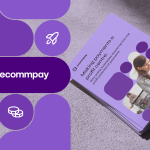
Enhancing Efficiency, Profitability, and Cash Flow through Strategic Company Restructuring
Restructuring a company means making changes to its financial, operational, and legal frameworks to boost efficiency, profitability, and cash flow. This process can take many forms, including refinancing, streamlining, and simplifying the corporate structure.
What is Business Restructuring?
Business restructuring involves modifying a company’s financial, operational, or legal structures to enhance efficiency and profitability. While it can benefit healthy companies, it is often used by financially distressed businesses to manage debts. Effective restructuring requires the expertise of a business turnaround specialist working with the management team and key stakeholders.
Restructuring isn’t just for financially troubled businesses; it can also address the need for change due to various factors such as new legislation, changing consumer preferences, or economic shifts.
The Advantages of Corporate Restructuring
Restructuring offers a chance to reassess the current state of a business and prepare it for the future. It can yield significant benefits, and directors should embrace the process, realising that traditional methods may need updating.
How Can a Company Be Saved Through Restructuring?
Restructuring aims to enhance a company’s financial and operational efficiency. Successful restructuring requires a tailored approach, considering the company’s current situation, short- and medium-term outlook, and future goals. Key restructuring processes include:
- Administration
Administration often occurs during financial difficulties or formal insolvency. Administration seeks to save viable parts of a distressed company, allowing continued trade. If this is not possible, administrators aim for better returns for creditors than liquidation would provide. Administration grants a moratorium, providing time, space, and legal protection for restructuring while the business operates.
- Pre-pack Administration
Pre-pack administration involves negotiating the sale of a distressed company’s assets before appointing an insolvency practitioner. The buyer can be an unrelated third party or the directors of the old company creating a new entity (newco). The transaction completes immediately after the insolvency practitioner is appointed, and the old company goes into liquidation. Employee rights are protected, and employees transfer to the newco with their existing terms and conditions.
- Company Voluntary Arrangement (CVA)
A CVA is a formal process to lower a company’s existing debt costs. It functions as a payment plan between the company and its creditors, supervised by a licensed insolvency practitioner. If 75% of creditors agree, the CVA becomes legally binding. The company makes monthly payments to the insolvency practitioner, who distributes funds to creditors. Some debt may be written off depending on what the company can afford.
Corporate Restructuring Options
When facing difficulties, financial and operational restructuring might be necessary. Options include CVAs and administration to help the company recover.
- Time to Pay (TTP) Arrangement with HMRC
Companies struggling with tax arrears may negotiate a TTP arrangement, extending the time to repay debts. TTP plans typically last 3-6 months but can extend to 12 months. Negotiations with HMRC should balance repayment amounts with affordability. Professional assistance can improve the chances of securing a TTP arrangement.
- Finance
Proper financing is crucial for survival during tough times. Restructuring involves assessing current finance obligations and potentially injecting new cash. Borrowing can be beneficial if managed correctly. Restructuring existing debt to lower interest rates or extending repayment periods can improve cash flow. Securing new funding, such as loans, invoice finance, or asset-based lending, can provide the necessary cash boost.
- Streamlining and Cutting Costs
Restructuring often includes streamlining and business simplification. Identifying and closing or scaling down non-performing areas allows resources to focus on profitable sectors. A streamlined structure improves efficiency and reduces operating costs, increasing resilience and stability.
Advantages of Corporate Restructuring
Restructuring offers a chance to reassess the current state of a business and prepare it for the future. Directors should embrace the process, realising that traditional methods may need updating. Benefits of restructuring include:
- Improved efficiency and profitability
- Better management of debts
- Enhanced focus on core business areas
- Increased resilience to economic shifts
Corporate Restructuring Processes
- Administration
Administration often occurs during financial difficulties or formal insolvency. Administration seeks to save viable parts of a distressed company, allowing continued trade. If this is not possible, administrators aim for better returns for creditors than liquidation would provide. Administration grants a moratorium, providing time, space, and legal protection for restructuring while the business operates.
- Pre-pack Administration
Pre-pack administration involves negotiating the sale of a distressed company’s assets before appointing an insolvency practitioner. The buyer can be an unrelated third party or the directors of the old company creating a new entity (newco). The transaction completes immediately after the insolvency practitioner is appointed, and the old company goes into liquidation. Employee rights are protected, and employees transfer to the newco with their existing terms and conditions.
- Company Voluntary Arrangement (CVA)
A CVA is a formal process to lower a company’s existing debt costs. It functions as a payment plan between the company and its creditors, supervised by a licensed insolvency practitioner. If 75% of creditors agree, the CVA becomes legally binding. The company makes monthly payments to the insolvency practitioner, who distributes funds to creditors. Some debt may be written off depending on what the company can afford.
Corporate Restructuring Options
When facing difficulties, financial and operational restructuring might be necessary. Options include CVAs and administration to help the company recover.
- Time to Pay (TTP) Arrangement with HMRC
Companies struggling with tax arrears may negotiate a TTP arrangement, extending the time to repay debts. TTP plans typically last 3-6 months but can extend to 12 months. Negotiations with HMRC should balance repayment amounts with affordability. Professional assistance can improve the chances of securing a TTP arrangement.
- Finance
Proper financing is crucial for survival during tough times. Restructuring involves assessing current finance obligations and potentially injecting new cash. Borrowing can be beneficial if managed correctly. Restructuring existing debt to lower interest rates or extending repayment periods can improve cash flow. Securing new funding, such as loans, invoice finance, or asset-based lending, can provide the necessary cash boost.
- Streamlining and Cutting Costs
Restructuring often includes streamlining and business simplification. Identifying and closing or scaling down non-performing areas allows resources to focus on profitable sectors. A streamlined structure improves efficiency and reduces operating costs, increasing resilience and stability.
The Long-Term Benefits of Corporate Restructuring
After restructuring, a company should be more resilient, better equipped for current threats, and more stable for the long term. Taking into account potential threats ensures it is fit for the present while improving stability, preserving stakeholder value, and increasing long-term viability.












